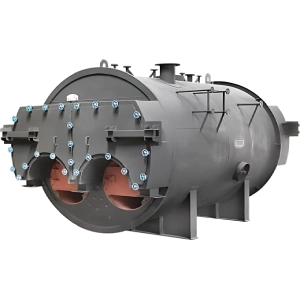What is Smoke tube boiler?
A smoke tube boiler is a type of boiler where the flue gases (smoke) pass through a series of tubes, surrounded by water. The heat from the flue gases is transferred to the water, which then turns into steam. Smoke tube boilers are a relatively simple type of boiler, and they are often used in small businesses and industrial applications.
Smoke Tube Boiler ( Internal Furnace)
Internal Furnace Smoke Tube Boiler: An internal furnace smoke tube boiler is a type of boiler that has a furnace that is located inside the boiler shell. The furnace is surrounded by water, and the heat from the combustion process is transferred to the water through the walls of the furnace. The flue gases then travel through a series of tubes that are also surrounded by water. This process of heat transfer is called convection.
Internal furnace smoke tube Steam boilers are a popular type of boiler for a number of reasons. They are relatively efficient, and they can be used to burn a variety of fuels. They are also relatively easy to maintain, and they can be installed in a variety of locations.
On the basis of Heat Transfer methods between the flue gases and water, most boilers can be divided into two basic parts:
Furnace: Where the radiation heat transfer dominate
Tubes: Where the convection heat transfer is prominent
some of the advantages of internal furnace smoke tube boilers:
- Efficiency: Internal furnace smoke tube Industrial boilers are relatively efficient, meaning that they can produce a lot of steam with a relatively small amount of fuel. This can save you money on your energy bills.
- Versatility: Internal furnace smoke tube boilers can be used to burn a variety of fuels, including coal, wood, and natural gas. This makes them a good choice for businesses and organizations that need to be able to use a variety of fuels.
- Maintenance: Internal furnace smoke tube boilers are relatively easy to maintain. This means that you will not have to spend a lot of money on maintenance costs.
- Installation: Internal furnace smoke tube boilers can be installed in a variety of locations. This makes them a good choice for businesses and organizations that have limited space.
Thermodyne’s Intech models are Shell and Tube type, which include furnace and tubes internal to the shell.
Majorly, all kind of fuels such as Wood, Coal, Husk, Liquid and Gaseous fuels can be used for combustion in these type of boilers.
Diagram of Smoke tube boiler

Internal Furnace Smoke Tube Boiler Working
By Internal Furnace we mean the furnace which is an internal part of the boiler where combustion of fuel takes place. Due to its internal design, most of the radiative combustion heat is transferred to the surrounding water and only a small amount of heat is lost to the environment which can also be taken care using various techniques.
The other term mentioned in the topic is the smoke tube, which means that the flue gases or smoke travel inside the tubes at high velocities thereby transferring convective heat to water.
Generally, tube passes are made in a boiler in order to achieve high heat transfer rates. On the basis of heat transfer rates, the heat transfer area is designed to achieve the desired boiler capacity.
Types Of Smoke Tube Boiler
The Internal furnace smoke tube boilers can be further divided into 3 types:
- Dry Back
- Semi Wet Back
- Fully Wet Back.
Dry Back Boilers
In dry back boilers, the rear end of the furnace (smoke box as well as the side plates) from which the flue gases reverse its path is exposed to the surrounding environment due to which the radiation losses to the surrounding are little more.
Semi-Wet Back Boilers
In semi-wet back boilers, the side shell of the wrapper drum which is connected to the furnace is surrounded by water while the rear end of the wrapper drum is exposed to the outside environment. These types of boiler also have radiation losses but are less as compared to dry back boilers.
Fully Wet Back Boilers
The third and the most energy efficient boilers are the fully wet back boilers in which the whole wrapper drum which is connected to the furnace from where the flue gases reverse its path is surrounded by water and so there are minimum or no radiation losses to the surrounding.
Internal Furnace Smoke Tube Boiler: Our Products
We at Thermodyne Engineering Systems are the top boiler manufacturer of Internal furnace smoke tube Boilers.
Following is the list of our Smoke tube boilers Intech models:
- Intech Dry Back
- Intech Semi-Wet Back
- Intech Fully-Wet Back
Intech Model Features: ( Smoke Tube Boiler Features)
- Intech is skid mounted design and so no special foundation work is required. This saves a lot of cost and space.
- Since there is no external furnace in these kinds of boilers so no brickwork is required at the site. This also saves a lot of cost and time.
- Our Intech models provide early paybacks during operation, because of its compact and internal furnace design heat losses are very low and so provide high fuel efficiency.
- Our Intech boilers are rigid boilers which have a long operation life and also require very less maintenance.
Also Read: What is the Combi Boiler?
https://contentupgrade.me/2ypMgB4D
Internal Furnace Smoke Tube Boilers FAQ
A smoke tube boiler is a type of fire tube boiler in which the flue gases from the furnace pass through a number of small tubes surrounded by water. The water is heated by the flue gases and turns to steam.
Smoke tube boilers have a number of advantages over other types of boilers, including:They are relatively simple to operate and maintain.
They are compact and easy to install.
They are efficient in terms of fuel usage.
Smoke tube boilers come in a variety of sizes to meet the needs of different applications. Small smoke tube boilers can be used in homes and businesses, while large smoke tube boilers can be used in industrial settings.
The cost of a smoke tube boiler will vary depending on the size, type, and smoke tube manufacturer. Small smoke tube boilers can cost a few thousand dollars, while large smoke tube boilers can cost 10 lacs to 80 lacs.
Smoke tube boilers can last for many years with proper maintenance. However, they are more susceptible to corrosion than other types of boilers.
moke tube boilers require regular maintenance to ensure that they operate safely and efficiently. This maintenance includes:
* Cleaning the boiler regularly to remove sediment and debris
* inspecting the boiler for leaks and corrosion.
* replacing worn or damaged parts
Smoke tube boilers can be dangerous if not properly maintained and operated. Here are some safety precautions to follow:
Never operate a smoke tube boiler without proper training.
Always follow the manufacturer’s instructions for operation and maintenance.
Keep the boiler area clean and free of debris.
Inspect the boiler regularly for leaks and corrosion.
Replace worn or damaged parts immediately.
Have a qualified technician service the boiler annually.
Smoke tube boilers emit pollutants into the air, including carbon monoxide, nitrogen oxides, and sulfur dioxide. These pollutants can contribute to air pollution and smog.
There are a number of alternative boilers that can be used instead of smoke tube boilers. These include water tube boilers, fire tube boilers, and heat recovery steam generators (HRSGs).
There are a number of factors to consider when choosing a smoke tube boiler, including:
The size of the boiler
The type of fuel to be used
The application for the boiler
The budget






